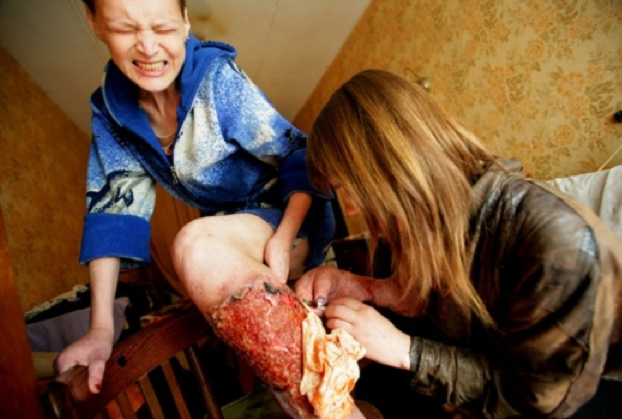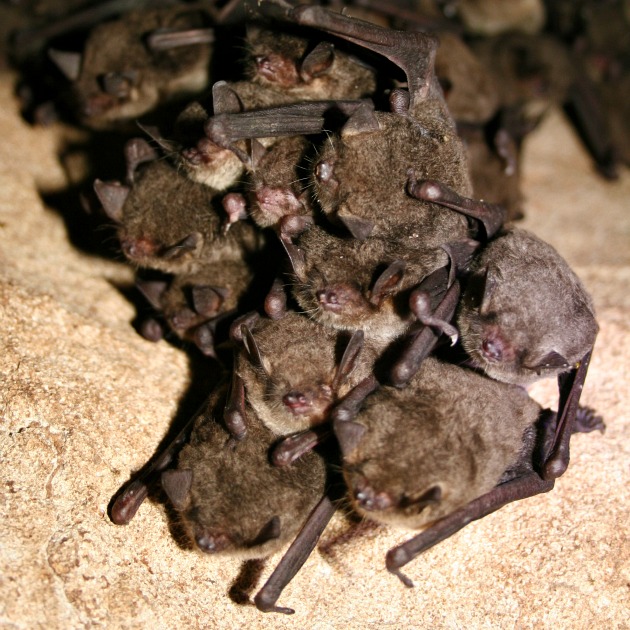Krokodil, a highly addictive designer drug that aggressively eats through flesh, has reportedly arrived in the United States. A Phoenix CBS affiliate revealed this week that two cases involving krokodil had been phoned into a local poison control center and quoted one of the center’s medical directors, Dr. Frank LoVecchio, saying he and his colleagues were “extremely frightened.” While the US Drug Enforcement Administration has not yet received a sample of the drug for analysis, and thus cannot confirm it was krokodil, Barbara Carreno of the DEA told Mother Jones that the agency often learns about new synthetic drugs (including the infamous bath salts) through local poison-control centers. “We’ve been scrambling to see what we know about the cases in Arizona,” she added. “This concerns us very much.”
Krokodil, technically known as Desomorphine, has a similar effect to heroin, but is significantly cheaper and easier to make. In the last few years, it’s been wreaking severe havoc on the bodies and lives of Russian youth. The drug earned its nickname—the Russian word for crocodile—because of the ghastly side effects it has on the human body. Wherever the drug is injected, the skin turns green and scaly, showing symptoms of gangrene. In severe cases, the skin rots away completely revealing the bone beneath. Other permanent effects of the drug include speech impediments and erratic movement. Rotting flesh, jerky movements, and speech troubles have prompted media outlets to tag krokodil the “zombie drug.” According to Time, the average user of krokodil only lives two or three years, and “the few who manage to quit usually come away disfigured.” Quitting is its own nasty business. Heroin withdrawal symptoms last about a week; symptoms for krokodil withdrawal can last over a month.
Krokodil use has skyrocketed in poor rural communities in Russia in the last few years, despite the troubling side effects. The Federal Drug Control Service in Russia told Time that in the first three months of 2011, it confiscated 65 million doses of the drug. Desomorphine didn’t originate in Russia; the potent painkiller was patented in the United States in 1934. It only became a recreational drug about 10 years ago, when it surfaced in Siberia. The Independent reported in 2011 that up to 5 percent of Russian drug users have used krokodil—as many as 100,000 people. Zhenya, a former user in Russia, told the Independent that when she used to inject krokodil, she was “dreaming of heroin, of something that feels clean and not like poison. But you can’t afford it, so you keep doing the krokodil. Until you die.”
The main ingredients in krokodil are codeine, iodine, and red phosphorous. The latter is the stuff that’s used to make the striking part on matchboxes. Sometimes paint thinner, gasoline, and hydrochloric acid are thrown into the mix. Like meth, it’s fairly easy to cook up in a home kitchen. You need a stove, a pan, and about 30 minutes. The drug is then injected directly into the vein, producing a high that lasts about an hour and a half. According to the Week, each injection costs about $6 to $8, while heroin is up to $25.
Carreno of the DEA says that krokodil isn’t a controlled substance yet because the agency has to have more evidence that it’s a public health problem. “You don’t want a federal agency going around making things illegal willy-nilly…We’d have to see more than two cases before we control it,” she notes. “But people are mixing codeine and gasoline, and shooting it into their veins. What do they expect?”
In the mean time, if you want to feel disgusted and never eat lunch again, look at the graphic picture below of a krokodil user. For more gruesome images, go here.













